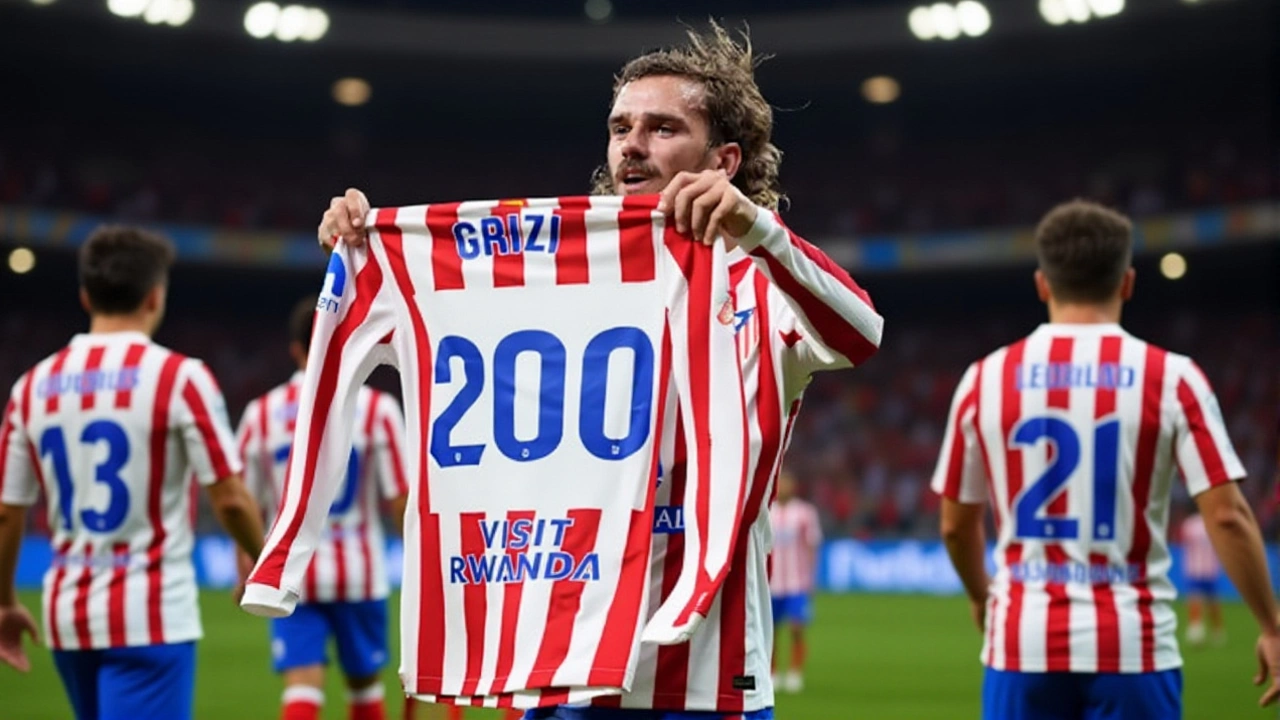Celta Vigo fought back from a Carl Starfelt own‑goal to draw 1‑1 with Atletico Madrid at Balaídos, with Iago Aspas equalising in the 68th minute.
Draw in Sports: What It Means and Why It Matters
When talking about draw, a game that ends with equal scores for both sides. Also known as tie, it shows up in nearly every competitive setting, from local leagues to world championships. A draw isn't just a lack of a winner; it signals a balanced contest, a moment where strategy, skill, and luck line up perfectly. Below you’ll see why this single result can change a whole season.
Every match, a scheduled face‑to‑face contest between two teams or athletes runs the risk of ending in a draw. Whether it’s football, cricket or basketball, the match structure determines how points are awarded. In many leagues a draw nets each side one point, while a win grabs three. That point allocation draw influences league tables, playoff chances, and even sponsorship money. Understanding the math helps fans see why coaches sometimes play for a draw instead of risking a loss.
The league, an organized competition where teams play each other over a season relies on draws to keep the standings fluid. When two clubs split points, the gap between them narrows, and the race for titles or relegation spots tightens. This dynamic pushes teams to adjust tactics mid‑season, chasing wins while also protecting against unnecessary losses. For a fan, the drama of a league table that swings after a single draw adds excitement beyond just the final whistle.
Not every tournament can tolerate a draw. Knockout events often use a tiebreaker, an extra method such as extra time, penalty shootout or away‑goals rule to decide a winner when the score stays level after regulation. The need for a tiebreaker creates a distinct pressure cooker where players shift from conserving energy to delivering clutch moments. This contrast shows how a draw can be both a safe result in a league and a trigger for high‑stakes drama in cups.
Why Draws Happen: Common Triggers
Defensive tactics are a major cause. When a coach parks the bus, the emphasis is on not conceding rather than scoring. This approach often leads to low‑scoring games that end level. Another trigger is weather; rain‑soaked pitches make ball control tricky, reducing goal chances and nudging both sides toward a stalemate. Finally, evenly matched squads simply cancel each other out – strong defenses meet solid attacks, producing a balanced scoreline.
Psychology also plays a role. Teams that have just lost a crucial game may prioritize avoiding another defeat, settling for a draw to regain confidence. Conversely, a side chasing a goal may take more risks, opening up space for counter‑attacks that can equalize the score. These mental shifts illustrate how a draw reflects more than just numbers; it mirrors the mindset of each side.
Statistically, draws account for roughly 20‑30 % of results in major football leagues, while basketball sees under 5 % because of its high scoring nature. Cricket’s limited‑overs formats produce tied matches far less often, but test cricket can end in a draw after five days of play without a decisive result. These figures show how the sport’s scoring system directly shapes draw frequency.
For bettors and analysts, draws are a special market. Odds on a draw often swing dramatically based on recent form, home advantage, and injury news. Smart bettors watch these factors, because a well‑priced draw can be a profitable niche. This financial angle reminds us that a draw isn’t just a sporting outcome; it’s also an economic event.
Fans react to draws in varied ways. Some celebrate a hard‑earned point against a rival, while others feel frustrated by a missed opportunity to win. Social media buzz reflects this split, with hashtags praising “defensive masterclass” alongside calls for “more attacking play.” The emotional split adds another layer to why draws matter beyond the scoreboard.
Looking ahead, rule changes can alter draw rates. Experiments like reducing the number of substitutes or tweaking offside rules aim to increase goal chances, potentially lowering draw percentages. Tracking how these adjustments affect outcomes offers a glimpse into the evolving nature of competition.
All this context sets the stage for the articles you’ll find below. They dive into specific draws—like surprising ties in NFL games, historic Premier League stalemates, and the strategic decisions that lead teams to settle for a point. Whether you’re a casual fan, a coach, or a data nerd, the collection gives you a full picture of why draws happen and what they mean for the game you love.

